
All categories
Featured selections
Trade Assurance
Buyer Central
Help Center
Get the app
Become a supplier

(24857 products available)



























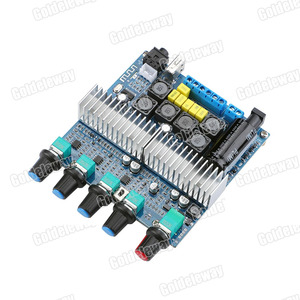
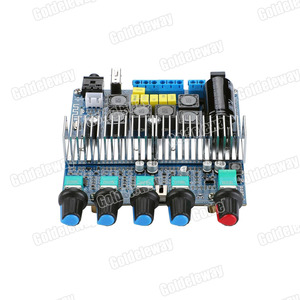
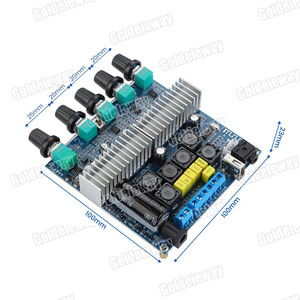
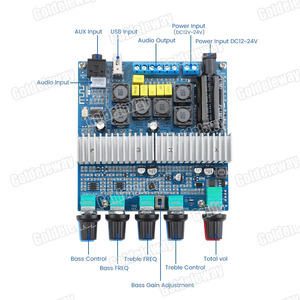
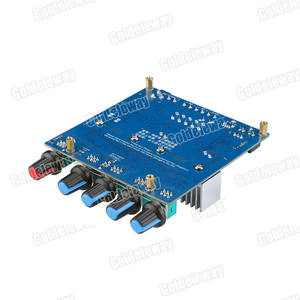
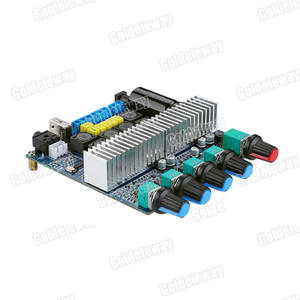



















TV speakers are meant to produce sounds from television sets. Unfortunately, most TV speakers do not provide high-quality sound. As a result, many people are looking for better solutions to improve their entertainment experiences. That's where speaker amplifiers come in handy. They are designed to enhance and enlarge the audio output from the TV.
According to different sources, there are approximately three types of speaker amplifiers for TVs, including:
The functions and features of amplifier speakers vary. They may include Bluetooth connectivity, optical and AUX input, and a subwoofer output, among others.
Bluetooth Connectivity
Many speakers with TV amplifiers come with built-in Bluetooth. This allows users to connect other Bluetooth-enabled devices easily to the speakers. If a user wants to play music or other audio content from a smartphone or tablet, they will simply connect the two via Bluetooth. No cables are required. Apart from amplifying the TV's audio, the Bluetooth connectivity gives the user a wider range of music playback options.
Optical Input and AUX Input
The optical input is a key feature for amplifier speakers made for use with TVs. TVs manufactured in recent years often come with an optical output port. This enables users to connect the optical cable directly from the TV to the amplifier speaker. This connection offers users a high-quality audio output. On the other hand, the AUX input gives users an alternative connection option. They can use the 3.5 mm AUX cable to connect from the TV's headphone port directly to the AUX input on the amplifier speaker.
Subwoofer Output
Some amplifier speakers for TVs have a dedicated subwoofer output. This is a connection port that allows users to link a separate external subwoofer. Adding a subwoofer enhances the audio experience, especially for users who desire rich low-frequency sounds. The bass produced by the subwoofer adds more depth to the listener's favorite music and movie soundtracks.
Optical Input
Optical input port allows users to connect the speaker using the optical cable. This connection provides a high-quality digital audio output. Users whose TVs have an optical output port should connect the optical cable from the TV to the speaker's optical input.
AUX Input
AUX input is another connection port found on amplifier speakers. It gives users an alternative connection option. They can connect the speaker directly from the TV's headphone port using a 3.5 mm AUX cable.
Users can apply TV amplifier speakers in multiple scenarios to enjoy an enhanced audio experience as discussed below.
Improved Movie and TV Soundtracks
Watching movies or TV shows with built-in monitors may not offer a compelling experience. Hence, when occupants of a house or a bunch of friends sit to watch a movie with a TV, sound systems can provide an amazing and immersive movie theater experience. It produces richer low-end frequencies, making soundtracks more exciting and dramatic by emphasizing the bass sounds. Additionally, more detailed midrange and higher frequencies improve dialogue clarity.
Musical Entertainment
With a larger sound-producing area, TV speakers can produce a deeper bass response and overall richer sound more suited for music. An amplifier can make it simple to listen to streaming music from obvious applications like Spotify or directly through a music channel by optimizing the compatibility of amplifier-driven speakers for music playback.
Gaming Sound Enhancement
In the case of real-time strategy games, multiplayer games, or action games, they often need more than just visual clarity. Gamers require speakers that can reproduce sound with more clarity and distinguish subtle audio cues like footsteps, gunshots, or environmental sounds. An amplifier with speakers can enhance the overall gaming experience. It is easier to identify the source of sound because more accurate and surround-like sound is produced.
Multi-Room Audio Systems
Speaker amplifiers can be part of multi-room audio systems, allowing users to enjoy consistent audio in any part of the house. Whether energizing a party with tunes, unwinding with an exhilarating music close to a chimney, or just tuning in to an early morning digital broadcast in the kitchen. Amplifying speakers make it simple to immerse any room within easy reach of a sound source.
Indoor and Outdoor Entertainment
TV speakers can turn any room into an entertainment hub. Amplifier speakers make them adaptable for indoor and outdoor entertainment. Whether amplifying the TV's audio for a family gathering in the living room, enjoying music playback by the pool, or watching the game on the patio with friends – speaker can meet any entertainment need.
Consider Room Size and Speaker Size:
When choosing speakers for the amplifier, one must consider the size of the room they are to be placed in. If the amplifier's speaker's music output capacity is not high enough, it may cause the speakers not to reach the required volume or disturb the sound waves due to the room's dimensions. One must ensure that the speaker size matches the room size by determining how loud the speakers should become. In order to fill a larger room with sound, larger speakers with higher wattage and music output capacity may be needed.
Type of Amplifiers:
Stereo amplifiers, which send separate signals to different speakers located on the right and left of the listener, are the more common kind. Home theater systems, on the other hand, use multichannel receivers as amplifiers that power many speakers. In front of the listener are a center channel speaker and two left and right front speakers, with surround sound speakers that are placed to the side and behind the listener to create a three-dimensional sound stage. The subwoofer provides low-frequency effects and deep vibrations. Because multichannel receivers combine many channels into one box and have more features, they tend to cost more than stereo amplifiers.
Speaker Compatibility:
Specific amplifier and speaker compatibility must be ensured. Many people wonder if speakers can be connected to a TV or if an external device like a streaming box, DVD player, or gaming console is needed to provide a signal to the amplifier. However, with HDMI arc, optical, and other digital connections, plus line-level RCA and component outputs for amplifiers and receivers with built-in amps, connecting directly to the best speakers for TV is now more accessible than ever.
Consider Features:
In addition to sound quality and compatibility with other equipment, one must consider features when choosing amplifier speakers for TVs. Features like multiple HDMI inputs, voice control with a smart assistant like Alexa or Google Home, and built-in streaming services like Spotify make it more convenient to listen to music and watch TV. Features like Bluetooth and Wi-Fi connectivity also let one stream music from a smartphone or tablet without wires. The ability to fine-tune the sound with controls for bass and treble adds to the listening experience.
Q: Can a computer connect to a TV amplifier?
A: Yes, a TV amplifier can be connected to a computer if the computer's output matches the amplifier's input. This allows sound from computer activities like gaming, streaming, or watching movies to play through the amplifier, creating a better audio experience.
Q: What is a channel in a TV amplifier's specification?
A: A channel in a TV amplifier's specification refers to the number of separate audio outputs the amplifier can use to reach different speakers. For an immersive experience with the amplifier speaker for TVs, a higher number of channels is better.
Q: Is the setup for a TV amplifier complex?
A: No, the installation process for a TV amplifier is not complex. The amplifier and the TV usually connect through cables, with the amplifier confirming it has a means to provide output for the speakers.